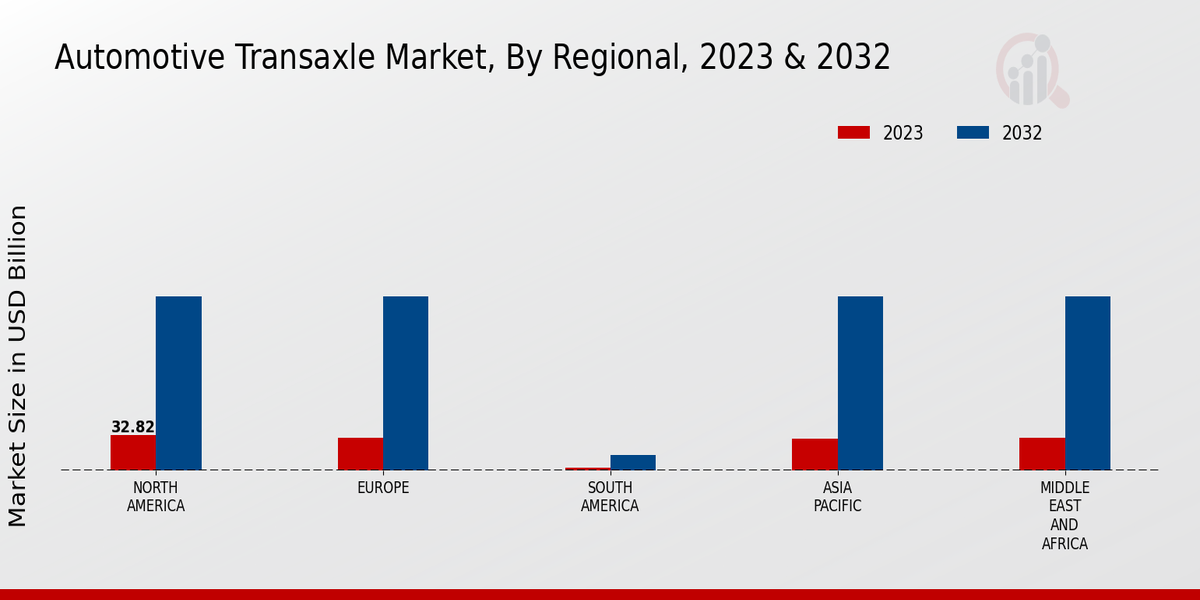Market Growth Projections
Increasing Demand for Fuel Efficiency
The Global Automotive Transaxle Market Industry is experiencing a notable surge in demand for fuel-efficient vehicles. As consumers become more environmentally conscious, automakers are compelled to enhance fuel economy through advanced transaxle technologies. This shift is evidenced by the growing adoption of hybrid and electric vehicles, which often utilize sophisticated transaxle systems to optimize performance. In 2024, the market is projected to reach 128.5 USD Billion, driven by innovations that improve energy efficiency. The emphasis on reducing carbon emissions further propels this trend, as regulatory frameworks worldwide increasingly mandate stricter fuel economy standards.
Growth of Electric and Hybrid Vehicles
The rise of electric and hybrid vehicles is a pivotal driver in the Global Automotive Transaxle Market Industry. As manufacturers pivot towards electrification, transaxles are evolving to accommodate electric drivetrains. This transition is not only reshaping vehicle architecture but also necessitating the development of specialized transaxle systems that can handle the unique requirements of electric motors. The increasing consumer acceptance of electric vehicles, supported by government incentives and infrastructure development, is likely to bolster market growth. The shift towards electrification is expected to contribute significantly to the market's expansion, aligning with the projected growth trajectory towards 177.7 USD Billion by 2035.
Regulatory Pressures for Emission Reductions
Regulatory frameworks aimed at reducing vehicular emissions are exerting considerable influence on the Global Automotive Transaxle Market Industry. Governments worldwide are implementing stringent emission standards, compelling manufacturers to innovate and adopt cleaner technologies. This regulatory pressure drives the demand for advanced transaxle systems that enhance fuel efficiency and reduce emissions. As a result, automakers are increasingly focusing on developing hybrid and electric vehicles equipped with sophisticated transaxles. The ongoing evolution of these regulations is likely to shape market dynamics, as compliance becomes a critical factor in vehicle design and production.
Technological Advancements in Transaxle Design
Technological innovations are reshaping the Global Automotive Transaxle Market Industry, with manufacturers investing heavily in research and development. The integration of advanced materials and manufacturing techniques enhances the durability and efficiency of transaxles. For instance, the adoption of lightweight materials reduces overall vehicle weight, contributing to improved fuel efficiency. Furthermore, the development of continuously variable transmissions (CVTs) and dual-clutch systems exemplifies the industry's commitment to enhancing performance. These advancements are expected to sustain market growth, with projections indicating a rise to 177.7 USD Billion by 2035, reflecting a compound annual growth rate of 2.99% from 2025 to 2035.
Rising Consumer Preferences for Advanced Features
Consumer preferences are shifting towards vehicles equipped with advanced features, significantly impacting the Global Automotive Transaxle Market Industry. Features such as adaptive cruise control, automated driving systems, and enhanced connectivity require sophisticated transaxle systems that can support these technologies. As consumers demand higher performance and greater convenience, manufacturers are compelled to integrate advanced transaxle designs that facilitate these features. This trend is likely to drive market growth, as automakers strive to meet consumer expectations while adhering to regulatory standards. The increasing integration of technology in vehicles is expected to contribute to the overall expansion of the market.





















